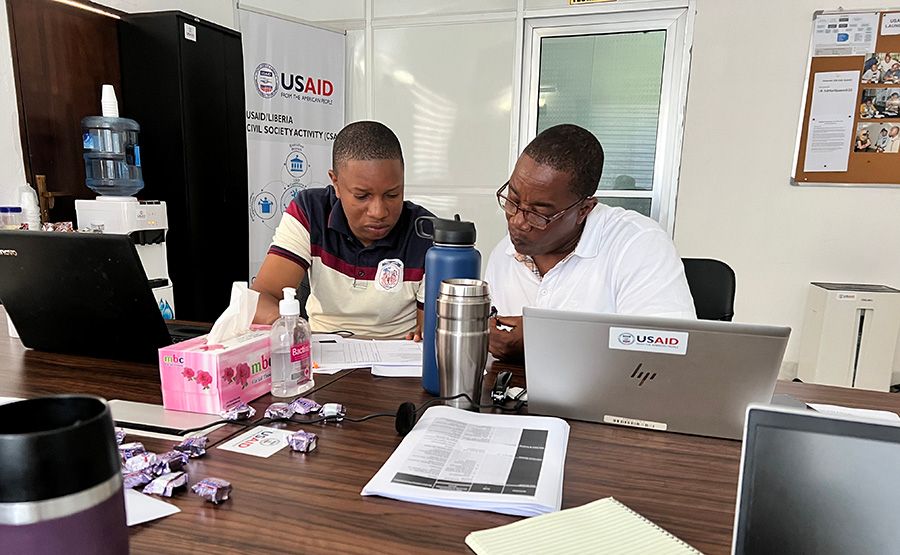DAI has been working in the fragile country of Somalia since 2017 to foster a government-owned social protection system that is underpinned by donor coherence, leadership, and coordination capacities.
There is an established consensus that humanitarian relief and development programming need to better coordinate and reinforce each other’s impact. Underlying all the buzzwords and debates around the “humanitarian-development nexus” is the belief that things must be done differently, in a more integrated manner, to ensure positive outcomes.
This belief comes from the recognition of several realities: conflicts last longer, creating extended displacement of people; environmental shocks are more frequent and intense; and climate change places stress on available resources, exacerbating tensions within and between communities. Our understanding of fragility has also progressed to reflect complex combinations of economic, environmental, political, security, and societal factors. It is estimated that 1.6 billion people (22 percent of the global population) currently live in fragile contexts, and these numbers are anticipated by the Organisation for Economic Co-operation and Development to reach 3 billion (32 percent) by 2050.
A new sense of urgency is reinforced by the fact that, while humanitarian appeals have skyrocketed in recent years, financing has not followed suit. Looming projections of fragility and worrying trends in conflicts and climate breakdown call for new alternatives to release pressure from traditional humanitarian finance.
A Bridge Solution
Against this backdrop, social protection represents an emerging tool and paradigm to bridge short-term humanitarian interventions and longer-term development objectives. A standard and accepted definition of social protection, according to the Inter Agency Social Protection Assessments, is “the set of policies and programmes aimed at preventing or protecting all people against poverty and social exclusion throughout their lifecycles, with a particular emphasis towards vulnerable groups.”
Humanitarian and social protection objectives are aligned in crises contexts, and the instruments they use (including cash transfers) are very similar. Differences mainly relate to government engagement and duration of the intervention: humanitarian principles call for neutrality, impartiality, and independence from government; social protection aims to strengthen state structures for social objectives, poverty reduction, resilience, and human development. Humanitarian interventions are framed within a short-term perspective to meet immediate needs; social protection works in a longer-term span.
These differences are not as irreconcilable as it may seem. It has been argued that independence from government is only necessary when governments are active stakeholders in conflicts: In other contexts, humanitarian principles are better served by working with public agencies. Timing is also less relevant to differentiate between humanitarian and development programmes: as crises become protracted, humanitarian interventions last longer and development aid is delivered in emergency settings.
There are strong arguments and growing operational experience in favour of social protection as a “game changer in supporting people through crises.” By working before, during, and after shock events, social protection seems to offer very concrete and operational options across the humanitarian-development nexus.
Current Situation
Somalia today is one of the poorest countries in the world. Infrastructure has been shattered by decades of conflict; education and vocational training are chronically limited; weak institutions do not support a functioning business environment, even though Somali private sector is extraordinary dynamic. Somali households are strongly dependent on aid and remittances. Despite their relative predictability, drought crises hit the country severely in 2008, 2012, and 2017, with a major famine in 2012, another narrowly averted in 2017. In July 2019, United Nations sources identified 5.4 million people in need of humanitarian assistance: 2.2 million face emergency and crises situations, other 3.2 million live under stress conditions.

Photo: USAID Somalia.
Humanitarian assistance is by far the principal form of international aid to Somalia, from a variety of bilateral and multilateral agencies. The aid architecture is however highly fragmented, with serious operational challenges for donors to cooperate more effectively. Differences start from corporate cultures and policies of engagement and extend to legal and procurement frameworks down to beneficiary targeting and registration. “Going it alone” is how aid is currently designed and delivered, often with a project or response approach limited to specific starting and end dates. One-off arrangements impede interoperability and joint data management, result in more costly operations, and reinforce the tendency to focus on short-term planning instead of long-term programming. Most of all, short-term emergency responses do not address the underlying causes of household vulnerability.
EU’s Strategy
The European Union (EU) is one of the leading donors in Somalia, providing more than €1.2 billion since 2008. Between 2014 and 2020, the EU committed €286 million in development aid, and has mobilized €245 million since 2014 on humanitarian aid. The EU and its Member States count for about 42 percent of all humanitarian assistance to Somalia.
The EU development strategy in Somalia is based on three pillars: (i) security and justice; (ii) resilience and economic growth; and (iii) statebuilding and democratic governance. Social protection is explicitly mentioned under the objectives of the second pillar: “the EU will contribute to move the protection of vulnerable households and the prevention and management of protracted and temporary crisis from an ad hoc basis to a strategic, deliberate, and collective effort. The EU will contribute to strengthening social protection and to have it being gradually delivered through the government as it is a major contributor to social development and equity.”
EU development cooperation is being channelled through the Inclusive Local and Economic Development programme. ILED’s objectives are (i) stabilisation and governance; (ii) economic growth; and (iii) social safety nets. The EU established a Technical Assistance Facility, independent but fully integrated to ILED, tasked with facilitating the design of a social protection programme. DAI technical advice proved crucial in this process.
DAI’s involvement in social protection in Somalia dates back to September 2017, when a team led by Technical Director Ric Goodman visited the country as part of the European Commission-funded ASiST programme. The team produced the “In pursuit of a safety net programme in the short-term paving the way to a social protection approach in the long term: Issues and options” report.
The report resulted from a review of relevant literature and extensive consultations with key donors, implementing agencies, experts, and the Federal Government of Somalia. It provided a roadmap for the establishment of a shock-responsive social protection system in the short, medium, and long term. The overall vision is a national, government-owned, sustainable system of social protection, capable of acting quickly and effectively before, during, and after crises. The report and its recommendations were widely circulated within the donor community, which set up a Donor Working Group as the first step to make the strategy operational. It is indeed recognized that, while government ownership of an effective system is the ultimate goal, improved donor coherence, leadership, and coordination capacities are its prerequisites.
The next step came in 2019, when the EU committed €1 million for the Technical Assistance Facility tasked with supporting the Donor Working Group and the Federal Government of Somalia in the early phases of the programme. DAI is leading that facility with an overall approach based on partnership and facilitation in a very complex institutional landscape. A political economy analysis identifies key actors in the Government of Somalia, at the federal and member states level, whose leadership is needed to sustain social protection reforms. Political and technical barriers are identified, together with options to address them. Policy coherence among Somalia’s international partners is also promoted within the Donor Working Group: the Technical Assistance Facility provides technical solutions and policy options, and offers coordination and secretariat functions. Based on the experience in the first phase of the project, the Facility will produce recommendations for the next phase.
The project will sustain stabilization and state building in Somalia, but will extend to build the knowledge base around social protection in crisis contexts, and as a humanitarian-development instrument. As such, it will be closely assessed to extract overall lessons for fragile situations that go beyond Somalia, to see what works, and in which conditions. It will inform policy-making and programme design for more effective and efficient interventions, it will address donor coordination issues, government ownership, programme sustainability. First and foremost, it will strengthen the work to improve people’s lives in contexts of crisis and fragility.
Gianfabrizio Ladini is a Project Manager in DAI’s Brussels office. DAI’s Ric Goodman, Technical Services Director, Resilience, contributed to this article.





